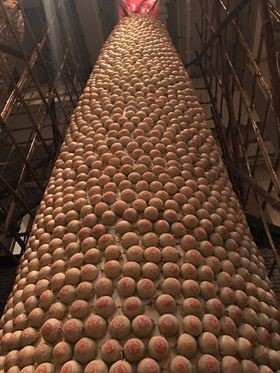History has never been the most interesting subject for me to learn about in school. Most of your time spent in class is on daydreaming about why this subject is important and mandatory to take. As I grow older, I begin to understand that history is important for us to learn about other people’s mistakes and not make them again. We also learn how cultures and traditions are formed and the meaning behind them. Today, we take a look at the Museum of History and the traditional cultures of Hong Kong.
The Museum started off from the beginning of Earth and how it was shaped and ended with modern times. I apologize beforehand as I did not take any pictures one of the first half of the museum. But we all know that the fun part is in the second half where we start seeing things we can relate to. One of them was incense and paper offerings. The smoke from the incense is said to invoke the gods and convey their prayers. The paper originated from an ancient practice where they offered real horses as burial offerings. Paper offerings nowadays resemble pictures of everyday objects such as clothes, hats, shoes, and jewelry. Papers are formed into these shapes so that the deceased will have them in the afterlife in order to live more comfortably.

Another tradition that I found really intriguing was bun mountains. Huge towers made out of bamboo and wooden poles rise up to 10 meters tall, covered with over 6,000 steamed buns, stamped in red ink with the word shou, which means longevity. This offering originated from the belief that the buns will be offered to the gods which in return would drive away evil spirits and protect the land.

Also in the museum is a section where you can write on a piece of paper for a wish and hang it on a tree. This tradition originated from Lam Tsuen Village in Tai Po. People would write their names, date of birth and wishes. Afterwards, they would throw the paper at the tree. If the paper can be successfully hung, your wishes will come true.

